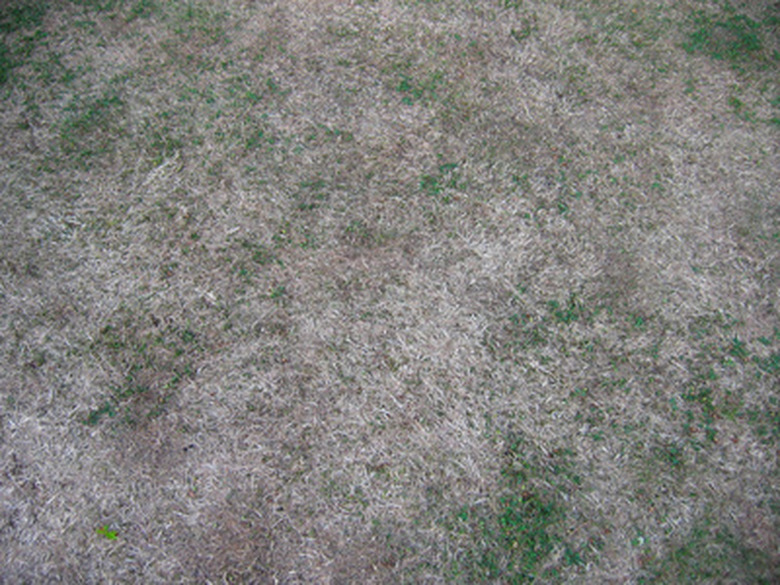Bugs That Kill Grass
Yellow or dead patches of lawn do not always mean that part of the grass has a disease or is poorly watered. Oftentimes, it signifies a problem with the roots of the grass. Insect pests or their larvae can devour the roots. This means grass cannot absorb any nutrients or water. Unfortunately, there are a few bugs that commonly damage or kill lawn grass.
Billbugs
Billbugs can damage all types of turf grass, according to the University of California. The damage starts as small, circular areas of dead grass about 2 or 3 inches across. Damage spreads rapidly in heavy infestations. The adult beetles do not damage the roots of the grass. The grubs and larvae do. The best way to control billbugs is to kill the adults before they have a chance to lay eggs. This is done by spraying insecticide on the lawn in early May.
- Yellow or dead patches of lawn do not always mean that part of the grass has a disease or is poorly watered.
- Unfortunately, there are a few bugs that commonly damage or kill lawn grass.
White Grubs
White grubs are the larvae of scarab beetles, which include the common May and June beetles. These grubs are particularly damaging because they will feed in their first summer of life, overwinter deep in the soil, and return to feed a second summer. The third summer, they will become adults that will lay more eggs. White grubs are heavy feeders. Only five grubs are necessary to kill 1 square foot of grass, according to Colorado State University. Keeping a healthy, lush lawn will help the grass withstand grub activity. The healthier the grass, the less likely grub damage will kill it. Healthy grass may be damaged but will recover when the grub activity subsides as they overwinter or become adults. Insecticides are often ineffective, as these bugs are not only deep within the soil, but are resistant to many of the chemicals used in the poison.
- White grubs are the larvae of scarab beetles, which include the common May and June beetles.
- These grubs are particularly damaging because they will feed in their first summer of life, overwinter deep in the soil, and return to feed a second summer.
Armyworms and Cutworms
Armyworms and cutworms are unique in that they don't attack the roots. Instead, they chew the blades of the grass. You'll see circular areas of grass that are cut down near the surface of the soil. Rather than the blades turning yellow and dying as the roots are consumed, the grass blades simply disappear. These insects target all types of turf grass and thrive in wet areas. That means one of the best ways to prevent armyworms and cutworms is to make sure your lawn drains well.
